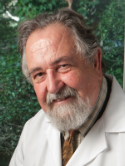CAR chase: Where do engineered cells go in humans? Editorial
| Authors: | Krebs, S.; Dacek, M. M.; Carter, L. M.; Scheinberg, D. A.; Larson, S. M. |
| Title: | CAR chase: Where do engineered cells go in humans? |
| Abstract: | Chimeric antigen receptor (CAR) – and T-cell receptor (TCR) – modified T-cells are rapidly emerging as a viable treatment option for cancer patients. While initial clinical trials for these CAR T cells showed response rates of over 90% in some cases, retrospective studies have revealed a wide variability in patient responses as well as a significant proportion of patients relapsing after an initial response. In addition, patients often have severe adverse reactions to this therapy (e.g., cytokine release and neurologic syndromes). As a result, much research is still needed to be able to predict both therapeutic outcomes and possible toxicities. Furthermore, little success has been seen in treating solid tumors with engineered T cells and uncovering modes of failure is a topic of much research. Finally, little is known about the T cells’ pharmacokinetics after infusion into the patient, as standard methods of tracking the cells analyze peripheral blood and tumor biopsies – both of which lack spatiotemporal information. Herein, we propose that reporter gene-based imaging of engineered T cells in humans would be tremendously valuable in elucidating the fate of the transplanted T cells and would greatly facilitate clinical translation of new CAR and TCR technologies. Currently, there are no FDA-approved reporter genes and few methods have advanced to human studies. Herein, we outline current reporter gene approaches to track engineered cells in vivo, analyze why current reporter genes have not progressed into the clinic, and propose “rules” for designing a widely applicable reporter gene for use in humans. © Copyright © 2020 Krebs, Dacek, Carter, Scheinberg and Larson. |
| Keywords: | cancer radiotherapy; nuclear magnetic resonance imaging; tumor localization; gene expression; image analysis; signal noise ratio; prostate specific membrane antigen; immune response; genetic engineering; dosimetry; glioblastoma; immunogenicity; fluorodeoxyglucose f 18; reporter gene; chimeric antigen receptor; gene silencing; gallium 68; biomedical engineering; pharmacokinetics; pet/ct; sodium iodide symporter; somatostatin receptor 2; radiolabeling; human; article; car t cells; positron emission tomography-computed tomography; t cell trafficking; tcr t cells |
| Journal Title: | Frontiers in Oncology |
| Volume: | 10 |
| ISSN: | 2234-943X |
| Publisher: | Frontiers Media S.A. |
| Date Published: | 2020-09-11 |
| Start Page: | 577773 |
| Language: | English |
| DOI: | 10.3389/fonc.2020.577773 |
| PROVIDER: | scopus |
| PMCID: | PMC7518311 |
| PUBMED: | 33042849 |
| DOI/URL: | |
| Notes: | Article -- Export Date: 2 November 2020 -- Source: Scopus |
Altmetric
Citation Impact
BMJ Impact Analytics
MSK Authors
-
 502
502Scheinberg -
 962
962Larson -
 57
57Krebs -
 89
89Carter -
 17
17Dacek
Related MSK Work



